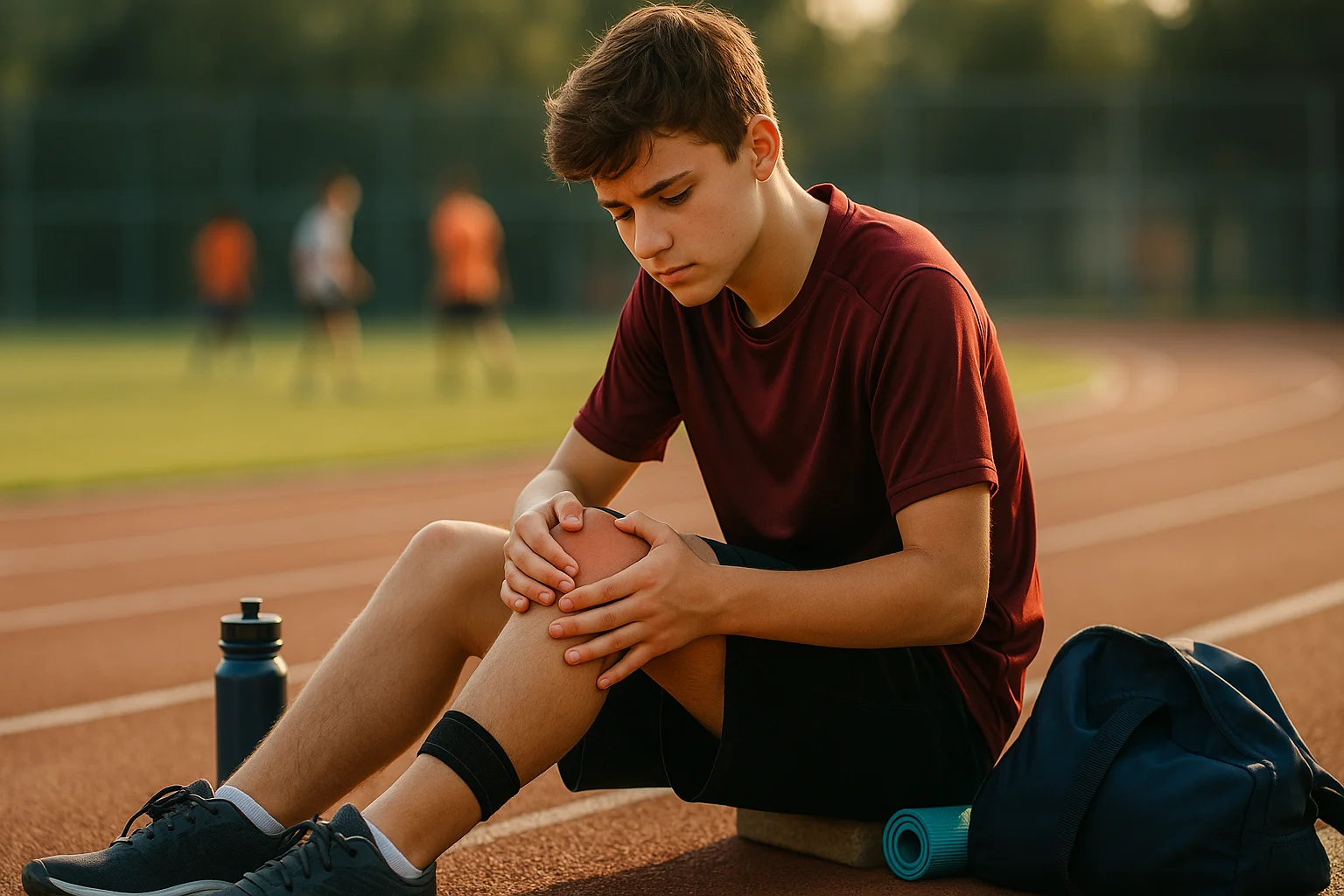

If you’ve got a sporty adolescent, you’ve probably heard phrases like “my knee hurts” after training or matches. Rapid growth combined with high activity levels can stress immature bones and growth plates. Conditions like Osgood‑Schlatter, Sinding‑Larsen–Johansson, and apophyseal injuries are common. In this post, I’ll walk you through how to assess them, conservative care strategies, and when it’s time for referral to a specialist.
Growth plates (physes) are soft cartilage zones at the ends of long bones, guiding bone growth. Open until mid‑teens or later, they’re more fragile than mature bone and susceptible to injury from both acute trauma and overuse . When repetitive strain or a sudden force impacts these areas, we must act quickly to prevent growth disruption, deformity or length discrepancy .
Signs to watch for:
In primary care, a detailed history (e.g. sports volume, mechanism of injury) and physical exam are key, followed by imaging if growth plate fracture is suspected .
Rapid growth + sports = hotspot for overuse injuries at knee apophyses. The most common are:
Osgood–Schlatter Disease
Sinding–Larsen–Johansson (SLJ) Syndrome
Initial steps:
Recovery timeframe:
While overuse is common, growth plate fractures (physeal injuries) are more serious. They require prompt diagnosis and possibly imaging plus specialist care .
Red flags include:
What to do next:
In many cases, adolescent sports injuries settle with rest and physiotherapy — but there are times when referral to a specialist is important. Consider a referral if:
Especially Salter–Harris types I–V. These require radiographic confirmation and specialist management.
For example, a tibial tubercle avulsion in Osgood-Schlatter that pulls bone away — this may need surgical fixation.
Chronic symptoms may indicate underlying pathology or ossicle formation that could require further imaging or intervention.
This is unusual for typical overuse injuries and could point to infection, tumour, or other less common conditions — prompt imaging and referral are critical.
Any gait abnormality that interferes with daily life or sport warrants further evaluation.
In rare cases, these may require surgical excision if conservative treatment fails.
If you're unsure, it’s always reasonable to refer for further assessment — particularly when pain affects school, sport, or quality of life.
Most adolescent overuse injuries heal well with time and movement-based rehab .
Plan includes:
Goal: Maintain functional activity but avoid excessive load that hinders healing.
Q1: How can I tell if my child’s knee pain is just “growing pains” or something more serious?
“Growing pains” usually cause vague aches in both legs at night without joint swelling or tenderness. If the pain is one-sided, focused on a specific spot (like below the kneecap or shin), worsens with activity, or is accompanied by swelling, limping, or tenderness to touch — it’s worth getting checked.
Q2: Is it okay for my child to continue sport with Osgood-Schlatter or Sinding-Larsen?
Yes, often it’s safe to continue sport as long as the pain is mild and doesn’t cause limping or interfere with function. If pain worsens during or after activity, a temporary rest or switch to low-impact exercise is best. A physiotherapist can help guide safe participation levels.
Q3: Will Osgood-Schlatter disease affect my child’s ability to play sport long-term?
Not usually. While symptoms can last months to over a year, especially during growth spurts, most teens recover fully without permanent damage. A small bony lump may remain below the knee, but it typically doesn’t cause long-term issues.
Q4: Do these conditions need surgery?
Very rarely. Most overuse injuries in adolescents respond well to rest, activity modification, and physiotherapy. Surgery may be considered only in specific cases — like a painful ossicle (bone fragment) after growth has finished — and only if symptoms persist despite all non-operative measures.
Q5: How do I know if it’s a growth plate fracture and not just a strain?
Growth plate injuries often follow a sudden injury and cause sharp pain, swelling, and trouble bearing weight. If your child can't walk, has deformity, or the area is tender to touch after an injury — especially around the knee or ankle — it’s safer to get an X-ray and consult a specialist early.